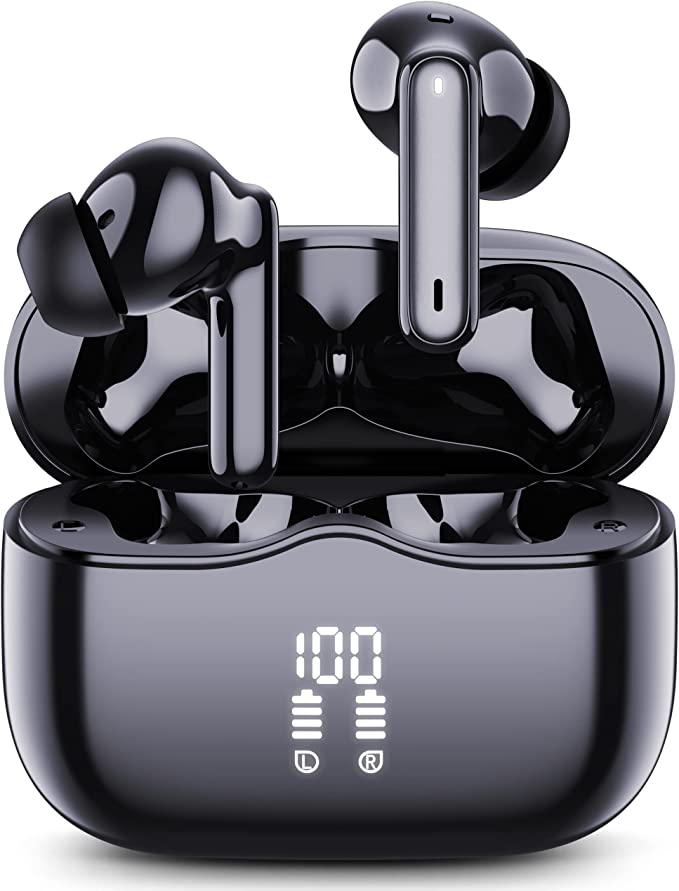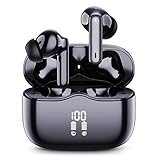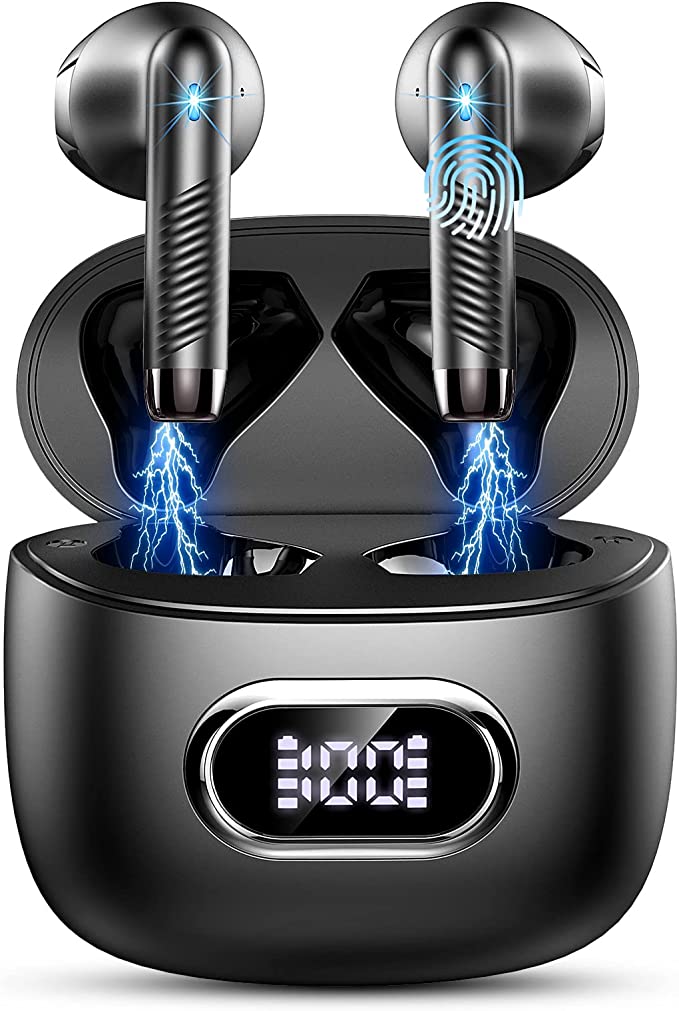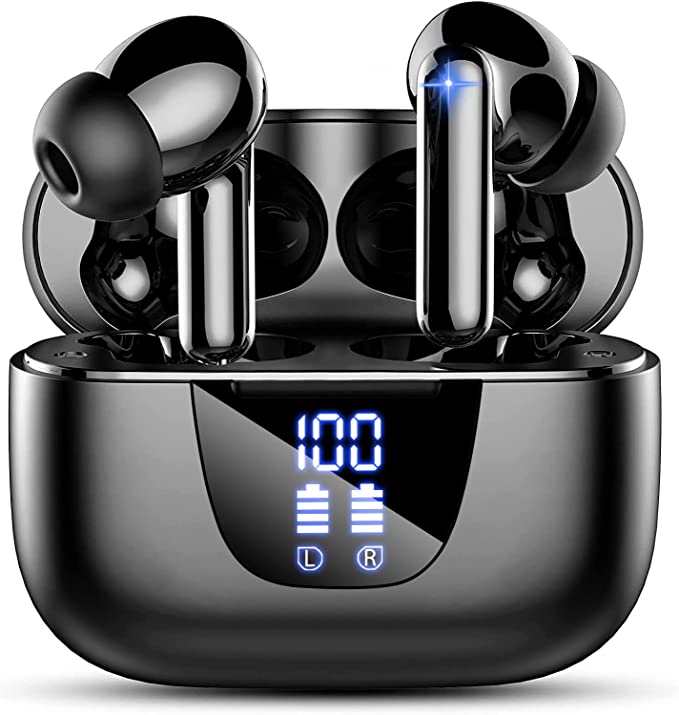Walk through any modern city, gym, or office, and you’ll see them: tiny buds nestled in ears, piping music, podcasts, or calls directly into people’s lives, seemingly by magic. True wireless earbuds have transitioned from novelty to near ubiquity, offering unparalleled freedom from tangled cables. But beneath their often sleek exteriors lies a complex interplay of sophisticated technologies. Let’s take the Xinwld A97 Pro Wireless Earbuds, a representative example from the current market, not just as a product, but as a fascinating case study to explore the science that makes this wireless audio revolution possible. What truly makes that Bluetooth connection hold steady in a crowded space? How do such small objects create rich sound? And how can they possibly last for hours on end? Let’s peel back the layers and decode the engineering together.

The Invisible Tether: Understanding Bluetooth 5.3’s Promise
The very foundation of any true wireless experience is the connection itself. Bluetooth technology acts like a sophisticated, short-range personal radio, broadcasting signals between your phone (or other source device) and the earbuds, typically using the busy 2.4 GHz frequency band – the same airspace inhabited by Wi-Fi routers, microwave ovens, and countless other devices. The A97 Pro earbuds feature Bluetooth 5.3, a specific version of this evolving standard.
While version numbers often imply simple improvements, what does “5.3” tangibly offer? According to the specifications provided for the A97 Pro, it aims for faster transmission speeds, stronger connection stability, and a longer operational range (claimed up to 15 meters, or about 49 feet, under ideal, line-of-sight conditions). The enhanced stability is perhaps the most crucial aspect for everyday use. Think about walking through a busy transit hub or working out in a gym filled with other wireless signals. Older Bluetooth versions could sometimes struggle, leading to annoying audio dropouts or stutters.
Science Bite: How might Bluetooth 5.3 achieve better stability? While the exact implementation varies, newer Bluetooth standards often incorporate improvements like enhanced “channel classification.” Imagine the Bluetooth signal needing to hop between different radio channels to avoid interference. Smarter algorithms can potentially identify and avoid channels that are already crowded or experiencing interference more effectively, leading to a more robust and less interrupted connection. It’s like finding the clearest path through a noisy room.
Furthermore, Bluetooth relies on specific “profiles” – think of them as specialized languages – to handle different tasks. The A97 Pro supports a suite including A2DP (Advanced Audio Distribution Profile) for high-quality stereo music streaming and HFP (Hands-Free Profile) for handling phone calls. This ensures the earbuds and your phone speak the right language for the job at hand.
The Payoff? A stable, reliable Bluetooth connection is the bedrock upon which the entire wireless audio experience is built. Fewer interruptions mean more immersive music and less frustrating calls – a fundamental benefit delivered by advancements in this invisible tether.

The Heartbeat of Sound: Deconstructing the 13mm Driver and Codecs
Moving from how they connect, let’s consider how these tiny devices actually produce sound. At the core of each A97 Pro earbud lies a 13mm dynamic driver. Think of this as a miniature loudspeaker. It works on a fundamental acoustic principle: an electrical audio signal causes a diaphragm (a thin, flexible membrane) within the driver to vibrate rapidly back and forth. These vibrations push and pull the air molecules next to them, creating waves of pressure – sound waves – that travel through the ear canal to your eardrum, which your brain then interprets as sound.
Science Bite: Does the driver size (13mm in this case) matter? From an engineering perspective, it can. A larger diaphragm generally has the potential to move a greater volume of air with each vibration compared to a smaller one. This increased air displacement is particularly relevant for reproducing lower frequencies – the bass and sub-bass notes that provide richness and depth to music. While driver size isn’t the sole determinant of sound quality (tuning, enclosure design, and other factors play huge roles), a larger dynamic driver like the 13mm unit found here theoretically provides a better foundation for achieving a fuller sound with more impactful bass, aligning with the manufacturer’s description of “Premium Deep Bass Stereo Sound.”
However, the audio signal doesn’t travel in its raw, uncompressed form over Bluetooth. The bandwidth is limited, so compression is necessary. This is where audio codecs come in. The A97 Pro supports SBC (Subband Codec) and AAC (Advanced Audio Coding). Think of codecs like specialized Zip files for audio. They compress the digital audio data on your phone before transmission and decompress it in the earbuds. SBC is the universal, mandatory codec for all Bluetooth audio devices – it gets the job done but isn’t always the highest fidelity. AAC, often favored by Apple devices but also supported by many Android phones, is a more advanced codec that generally offers potentially better sound quality than SBC at similar data rates, especially if implemented well on both the transmitting and receiving devices.
Connecting Spec to Sensation: The combination of the 13mm driver’s physical capabilities and the supported digital audio codecs (AAC offering a step up from the baseline SBC) forms the technological basis aiming to deliver the desired listening experience – in this case, one potentially characterized by prominent bass and clear stereo imaging.

Cutting Through the Noise (Yours, Not Theirs): Call Clarity Technology
We’ve all been there: trying to have an important phone call while walking down a busy street or sitting in a bustling café, only to have the person on the other end struggle to hear you over the background din. The A97 Pro description mentions that the built-in microphone in each earbud utilizes call noise cancellation.
Critical Distinction: It’s crucial to understand that this is not the same as Active Noise Cancellation (ANC), a technology designed to reduce ambient sounds for the listener, creating a quiet bubble for music enjoyment. Instead, “call noise cancellation” (sometimes referred to using terms like cVc – Clear Voice Capture, though not specified here) focuses specifically on improving the clarity of your voice as it’s transmitted to the person you are calling.
Science Bite: How does it work, conceptually? These systems typically use the microphones integrated into the earbuds (often one primary mic closer to the mouth and potentially others) to capture both your voice and the surrounding environmental noise. Sophisticated algorithms then process these signals. Techniques like beamforming might be used to computationally “focus” the microphone pickup pattern towards your mouth, while other algorithms attempt to identify and subtract the steady-state or predictable background noise (like traffic rumble or office hum) from the overall signal before it’s sent over the Bluetooth connection.
Real-world Value: The goal is straightforward: to make your voice stand out more clearly from the background noise for your call partner. While it won’t magically silence a raucous environment, effective call noise cancellation can make a significant difference in intelligibility during calls made in moderately noisy settings. Keep in mind the product note stating a reduced battery life (around 4 hours) when primarily used for calls, likely due to the increased processing required.

Powering the Experience: Battery Life, the Telling Display, and Fit
A pair of earbuds, no matter how great they sound or connect, are useless if they run out of power halfway through your day. Wireless earbuds have made huge strides in battery life, and the A97 Pro specifications reflect this. They claim 6-8 hours of playtime from the earbuds themselves on a single charge, with the compact charging case holding an additional 30 hours of reserve power. This totals approximately 36 hours of potential listening time before needing to find a USB port to recharge the case (which reportedly takes 1.5 hours). For many users, this translates to several days, or even a week, of typical usage without battery anxiety.
Adding to this peace of mind is the LED Power Display integrated into the charging case. Instead of relying on vague indicator lights, this small digital screen shows the exact percentage of battery remaining in the case. This simple but incredibly useful feature eliminates the guesswork – you know precisely when the case needs a top-up, allowing for better power management.
Beyond battery, the physical design plays a vital role in the overall experience. The A97 Pro earbuds are described as “Mini Ultra Lightweight,” weighing only 4 grams each. Combined with the inclusion of three different sizes of silicone ear tips (S/M/L), the aim is ergonomic comfort for extended wear. Finding the right fit isn’t just about comfort, though.
Subtle Science Link: A snug yet comfortable seal within the ear canal is critical for two acoustic reasons. Firstly, it provides good passive noise isolation, physically blocking out some external sound before any electronic cancellation occurs. Secondly, a proper seal is essential for optimal bass response, preventing the low-frequency energy generated by the driver from leaking out. Therefore, the lightweight design and customizable fit contribute not only to comfort but also indirectly to the perceived sound quality.

Built for the Real World? Understanding the IPX7 Rating
Life is unpredictable, and sometimes your electronics face the elements. Whether it’s sweat during an intense workout or an unexpected downpour on your commute, moisture is generally the enemy of intricate circuitry. The Xinwld A97 Pro earbuds feature an IPX7 waterproof rating. But what does this code actually signify?
“IP” stands for Ingress Protection, and the two digits following it represent ratings against the intrusion of solids (first digit) and liquids (second digit), based on standardized tests. In IPX7:
* The ‘X’ means the product has not been specifically tested or rated for protection against solid particle ingress (like dust or sand) according to the standard procedures.
* The ‘7’ signifies a high level of liquid ingress protection. Specifically, it means the device is protected against the effects of temporary immersion in water under standardized conditions: up to 1 meter (about 3.3 feet) deep for a maximum of 30 minutes.
Science Bite: Achieving such a rating typically involves careful engineering of the earbud casing, using precise seals (often made of silicone or similar materials) around joints, buttons, and microphone/speaker ports to prevent water from reaching the sensitive internal components. Sometimes, hydrophobic coatings are also applied to surfaces to repel water droplets.
Practical Protection: This IPX7 rating means the earbuds (crucially, not the case) are designed to withstand sweat without issue and should survive being caught in the rain or accidentally dropped into a puddle (provided they are retrieved quickly). It generally implies they are well-suited for workouts and outdoor use in damp conditions. However, it’s typically not sufficient for activities like swimming or showering, where water pressure or prolonged exposure might exceed the test limits.
Essential Caveats: The manufacturer rightly points out two critical details. Firstly, the charging case is not waterproof and must be kept dry. Secondly, after exposure to sweat or water, it’s essential to wipe the metal charging contacts on the earbuds thoroughly dry before placing them back in the case to prevent corrosion and ensure proper charging.

Conclusion: The Symphony of Technologies
Looking closely at a device like the Xinwld A97 Pro reveals that a satisfying true wireless experience isn’t the result of a single breakthrough feature, but rather a carefully orchestrated symphony of technologies. The stability promised by Bluetooth 5.3 provides the reliable connection. The 13mm drivers and audio codecs work in concert to shape the sound profile. Call noise filtering technology aims to keep conversations clear amidst distraction. Intelligent power management delivers impressive endurance, enhanced by the certainty of an LED display. And the IPX7 rating adds a layer of practical durability against the elements.

What’s perhaps most remarkable is how rapidly these once-premium features have become accessible in the broader market, as exemplified by devices aiming for cost-effectiveness like this one. This democratization of technology puts powerful audio tools in the hands of more people. By understanding the science – the radio waves, the acoustic principles, the digital processing, the material considerations – behind the specifications on a product page, we not only become more informed consumers but also gain a deeper appreciation for the incredible engineering packed into the everyday gadgets that shape our increasingly wireless world.




